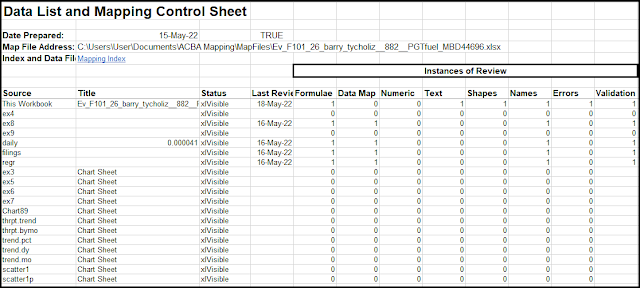Nearly all spreadsheet error values are as a result of a problem within a formula, but …
The ACBA Mapping software was made available in its
ribbon-based format in December 2021. There had been considerable testing of the
technical aspects of the software and its interaction with the ribbon. However,
relatively little testing had been undertaken on publicly available spreadsheet
collections like the Enron Corpus.
I began reviewing the Enron spreadsheets on a workbook by
workbook basis in early spring 2022. The results of that review will be
published later. However, it became clear the different authors had very
different approaches to the construction of spreadsheets.
In particular, I came across cell constants which were
themselves error values. I should emphasise that these were not as a result of
formula errors. The original ACBA Mapping software had not taken account of
this possibility.
Cell Constant - Error Values
The spreadsheet file “NYMEX Straddles” displays the following worksheet.
The cells containing error values are highlighted. These are
not formula cells. In fact there are no formulae on this worksheet.
Under the December 2021 version of ACBA Mapping all the non-empty
cells would have presented as ‘T’ with a background of red. Under this revision
the error value cells display as ‘r’ – for error – and these have a dark green
background.
Similarly, the workbook review of errors has been amended to include the error constants.
Chart Sheets
For the most part Chart Sheets are visual representation of
data from a worksheet. They are the end product or representation of a data
analysis. While, we have now included Chart Sheets in the list of sheet like
objects, the table will not show any further analyses.
 |
| Chart Sheets are included in the list of sheets. |
Downloading ACBA Mapping
Access to Help
There is a discussion group dedicated to providing a forum for help and information - Excel - Cell Mapping. I recommend you join the group.
Alternatively, you can email me directly from the Stephen Allen link within the form.



Comments
Post a Comment